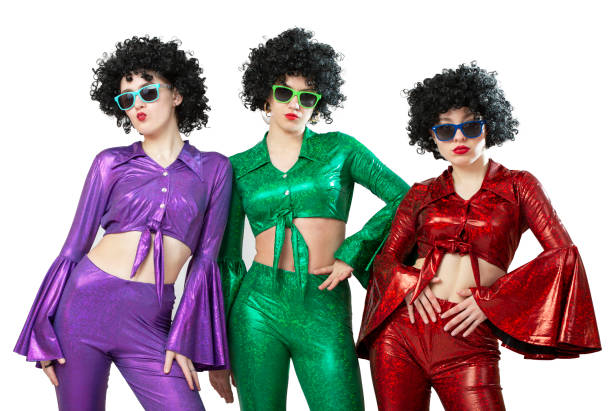The 1980s, an era characterized by bold fashion, neon lights, and an unabashed sense of excess, gave rise to a musical phenomenon that would leave an indelible mark on the world of rock and roll—80s hair bands. Defined by their flamboyant style, larger-than-life personalities, and anthemic sound, these bands became the sonic architects of an era that celebrated both rebellion and hedonism. In this exploration, we’ll dive into the rise, impact, and enduring legacy of 80s hair bands, examining their influence on music, fashion, and pop culture.
Birth of the Movement:
The roots of 80s hair bands can be traced back to the late 1970s, with the glam rock movement laying the groundwork for the decadent sound and image that would come to define the genre. Bands like T. Rex and David Bowie set the stage for the theatrics, flamboyance, and gender-bending aesthetics that would be embraced and amplified by the bands of the 80s.
Characteristics of 80s Hair Bands:
Distinctive Look: Hair bands of the 80s were known for their distinctive look, characterized by long, teased, and often permed hair. The band members flaunted flamboyant and androgynous fashion, with tight leather pants, spandex, and an abundance of accessories.
Power Ballads: A hallmark of the genre was the power ballad—a slow-tempo, emotionally charged song that often showcased the band’s versatility and contributed to their mainstream success. Bands like Bon Jovi and Whitesnake became synonymous with these anthemic ballads.
Guitar Virtuosity: 80s hair bands were marked by exceptional guitar virtuosity. Guitarists like Eddie Van Halen, Slash, and George Lynch became revered for their technical skill and distinctive solos, contributing to the genre’s electrifying sound.
Arena Rock Anthems: The genre was known for its anthemic, arena-rock sound. Bands crafted songs with catchy choruses, memorable hooks, and powerful vocal deliveries, creating a sonic experience that resonated with large audiences.
Breakthrough Bands:
Guns N’ Roses: Emerging from the gritty streets of Los Angeles, Guns N’ Roses disrupted the glam-dominated scene with their raw, rebellious sound. The album “Appetite for Destruction” catapulted them to superstardom, showcasing a grittier side of the 80s rock movement.
Bon Jovi: With charismatic frontman Jon Bon Jovi at the helm, Bon Jovi became synonymous with anthemic rock hits and stadium-sized performances. Albums like “Slippery When Wet” and “New Jersey” solidified their status as one of the era’s biggest acts.
Def Leppard: Hailing from the UK, Def Leppard brought a polished sound and meticulous production to the genre. Their album “Hysteria” achieved massive success, featuring a string of hit singles and becoming a landmark release in the 80s rock canon.
Cultural Impact:
Fashion and Style: The fashion of 80s hair bands left an indelible mark on the era. Spandex, leather, bandanas, and teased hair became emblematic of the genre’s larger-than-life aesthetic. Fans emulated the style, contributing to the visual identity of the movement.
MTV and Music Videos: The rise of MTV in the 1980s played a pivotal role in the success of hair bands. Music videos became a crucial promotional tool, allowing bands to showcase their theatrical performances and establish a visual brand. Iconic videos, such as Guns N’ Roses’ “Sweet Child o’ Mine,” became cultural touchstones.
Global Phenomenon: 80s hair bands achieved global success, transcending borders and cultural differences. Their music became anthems for a generation, and their influence extended far beyond the confines of the rock genre, infiltrating mainstream culture.
Challenges and Criticisms:
Commercialization: The commercial success of 80s hair bands also led to criticisms of over-commercialization and a perceived focus on image over substance. Some critics argued that the genre became formulaic, with bands adhering to a specific sound and look to capitalize on market trends.
Gender Stereotypes: The androgynous look of many hair band members challenged traditional gender norms, but it also led to criticisms of reinforcing stereotypes. The genre’s emphasis on hypermasculinity and objectification of women in videos sparked debates about the representation of gender in rock music.
Transition to Grunge: The early 1990s witnessed a shift in musical tastes with the rise of grunge, marked by bands like Nirvana and Pearl Jam. The raw, anti-establishment ethos of grunge stood in contrast to the polished, glamorous image of 80s hair bands, leading to a decline in the genre’s popularity.
Legacy and Revival:
Enduring Influence: Despite facing criticism and the changing musical landscape, the legacy of 80s hair bands endures. Their impact on rock music, fashion, and the concert experience has left an indelible mark on subsequent generations of musicians and fans.
Nostalgia and Revival: The 21st century has witnessed a resurgence of interest in 80s hair bands, fueled by nostalgia and a renewed appreciation for the era’s music and aesthetics. Bands like Steel Panther embrace the genre’s flamboyant style with a modern twist, appealing to both original fans and a new generation.
Influence Across Genres: The influence of 80s hair bands extends beyond rock, permeating other genres and inspiring artists in unexpected ways. Elements of the genre’s theatricality and energy can be found in the music and performances of contemporary pop and alternative artists.
Individual Legacies:
Guns N’ Roses: Known for their rebellious spirit and raw sound, Guns N’ Roses left an enduring legacy with iconic albums like “Appetite for Destruction.” The band’s turbulent journey and timeless hits have solidified their place in rock history.
Bon Jovi: With anthems like “Livin’ on a Prayer” and “You Give Love a Bad Name,” Bon Jovi became synonymous with the optimism and resilience of 80s rock. Jon Bon Jovi’s enduring career and philanthropic efforts have further cemented the band’s legacy.
Def Leppard: Def Leppard’s meticulous production, innovative use of technology, and resilience in the face of adversity (such as drummer Rick Allen’s overcoming of a serious accident) have contributed to their lasting impact. “Hysteria” remains a landmark album in the genre.
Conclusion:
The saga of 80s hair bands is one of excess, rebellion, and enduring musical legacy. Defined by their theatrical performances, larger-than-life personalities, and infectious anthems, these bands became cultural icons that transcended the boundaries of the rock genre. The impact of 80s hair bands on music, fashion, and pop culture continues to resonate, reminding us of an era where the decibels were as loud as

